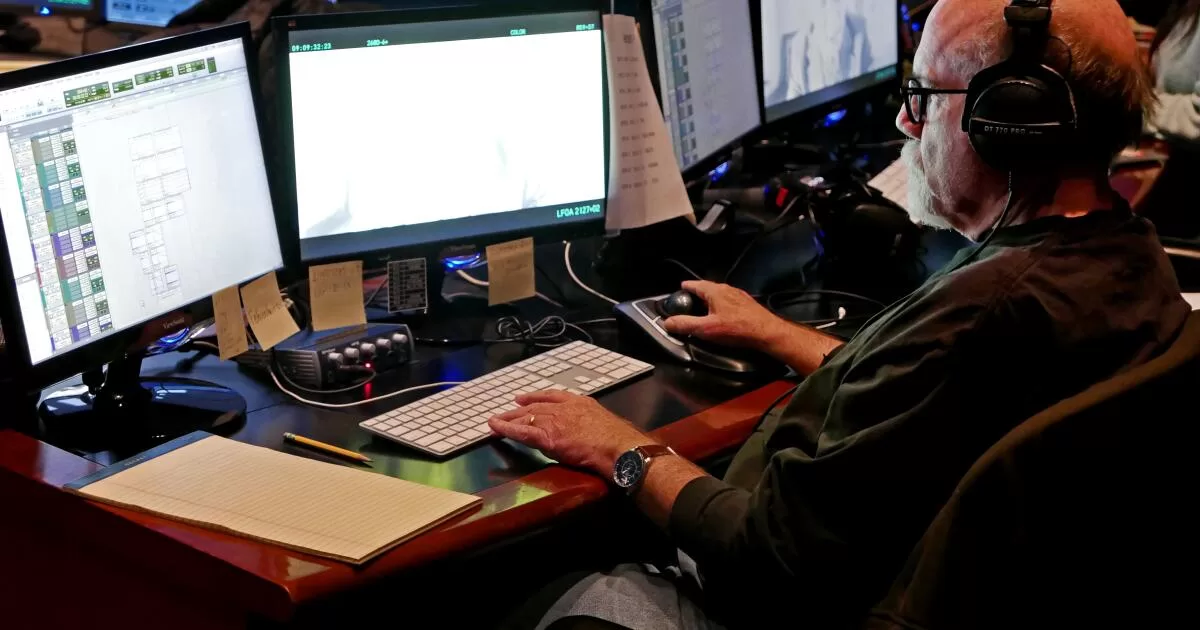“I’m a big fan of found sounds, things you might find on YouTube, any sort of natural phenomena, like volcanoes,” says King, speaking from the Eagle Rock home he shares with three dogs.
A few years ago, King became smitten with scratchy audio of the sonic boom produced by a meteor explosion over Russia. “When the shock wave hit the earth, dogs started barking, car alarms went off everywhere, the camera shook,” he recalls. “The explosion was recorded on a built-in mic, but it captured enough of the feeling that I thought, ‘Someday I’ll have a place to use this.’”
Sure enough, when director Christopher Nolan asked him to emulate the sound of the world’s first thermonuclear device for “Oppenheimer,” King had his epic-scaled 2013 Chelyabinsk asteroid reference close at hand.
“Chris loves to make big, bold statements, and I love to create sounds for large events while trying to make them relatable,” says King, who won sound editing Academy Awards for Nolan’s movies “Dunkirk,” “Inception” and “The Dark Knight.” (His fourth Oscar was for Peter Weir’s “Master and Commander: The Far Side of the World.”)
“I try to make sounds where an audience member would think, ‘I can imagine something like that in the world.’”
Real-world asteroid shock waves may have inspired King’s re-creation of the 1945 “Trinity test” detonation, but the explosion heard in movie theaters actually combined some 20 different elements into one mighty wall of sound. King breaks it down: “We built things from conventional explosions, we had some hard rock slams, thunder that we modified a bit, sounds of train [cars] shunting together where they make a gigantic bang.” The resulting rumble served Nolan’s often-articulated desire to impact audiences on a visceral level, King says. “Good theaters have sound systems that can reproduce very low frequencies in ways that don’t hurt the ears. It’s a full body experience just like those scientists and military men felt on the [Trinity test] day. You’re not even given a moment to think.”
The seat-rattling nuclear weapon detonation masterminded by J. Robert Oppenheimer (Cillian Murphy) evokes peak dread, but even seemingly mundane sequences demanded deep dives from King and his team. When Oppenheimer’s wife, Kitty (Emily Blunt), gathers laundry from a clothesline, Nolan wanted the moment “to feel almost like an action scene, showing the power of nature with the snapping sound of clothes being whipped by the wind,” King says. “We flapped sheets, we snapped them, we added little sweeteners of whip cracks to the point where it’s almost frightening, like: ‘You don’t want to get in the way of one of those sheets!’”
King, who studied fine arts at the University of Southern Florida before pursuing film in New York, generally builds his soundscapes layer by layer, as if applying paint to canvas. “The idea is that if you start with one sound and layer another sound on top of it, you’re going to make a third sound. The more you layer, the more you create a dynamic that you could never achieve with the simplicity of one sound.”
But if Nolan had his way, the filmmaker would capture all sounds live on set.
“Chris wants that tangible realism, so his preference would be to get all the sounds on the days he’s shooting,” King says. “That not being possible, we try to add sounds that feel like they were recorded on the day. Unless you really go overboard, you can get away with a lot.”
Case in point: When Oppenheimer climbs the Trinity test tower in the desert during a windstorm, King’s team added the sound of clacking cables and more. “Oppenheimer’s tie is flapping all over the place, so you add that,” he says. “Sand’s hitting his body, add that. It becomes almost like a photorealistic painting where the deeper you look into it, the more you can add.”
King’s talent for imbuing movie sound with affecting depth — also on display in “Maestro” and, next month, “Dune: Part Two” — reflects a storytelling imagination that goes beyond technique alone.
“For me, sound design is my chance to vicariously be there with the characters and live in their skin for a bit,” King says. “I might throw in something the audience won’t even notice, like an odd-sounding bird, but subconsciously all these elements add up to a rich experience. Chris and I always want to go into the image and make it feel as if you’re looking out your window. You see three dimensions, you hear three dimensions, and the audience assumes all that sound has always been there.”
